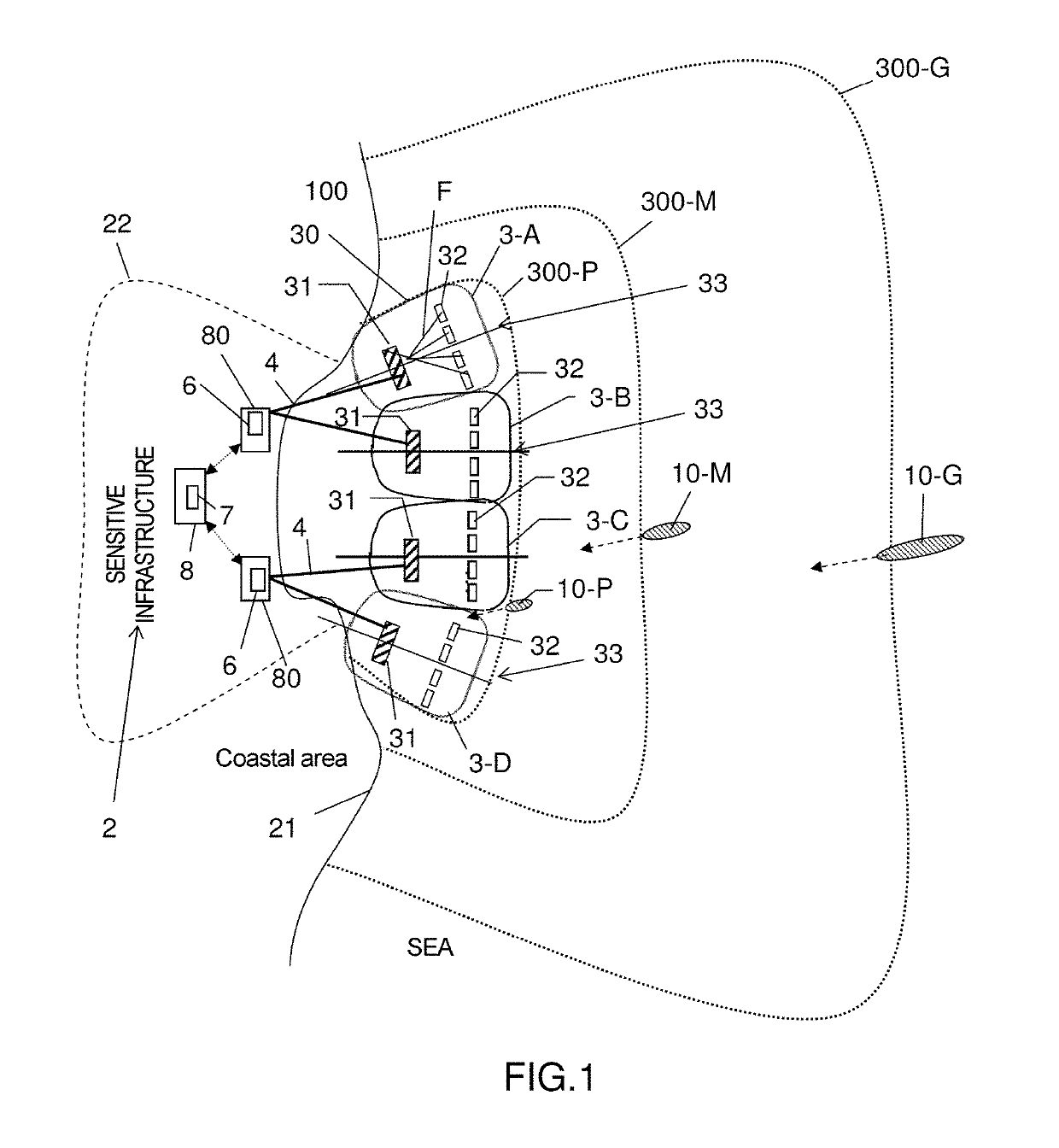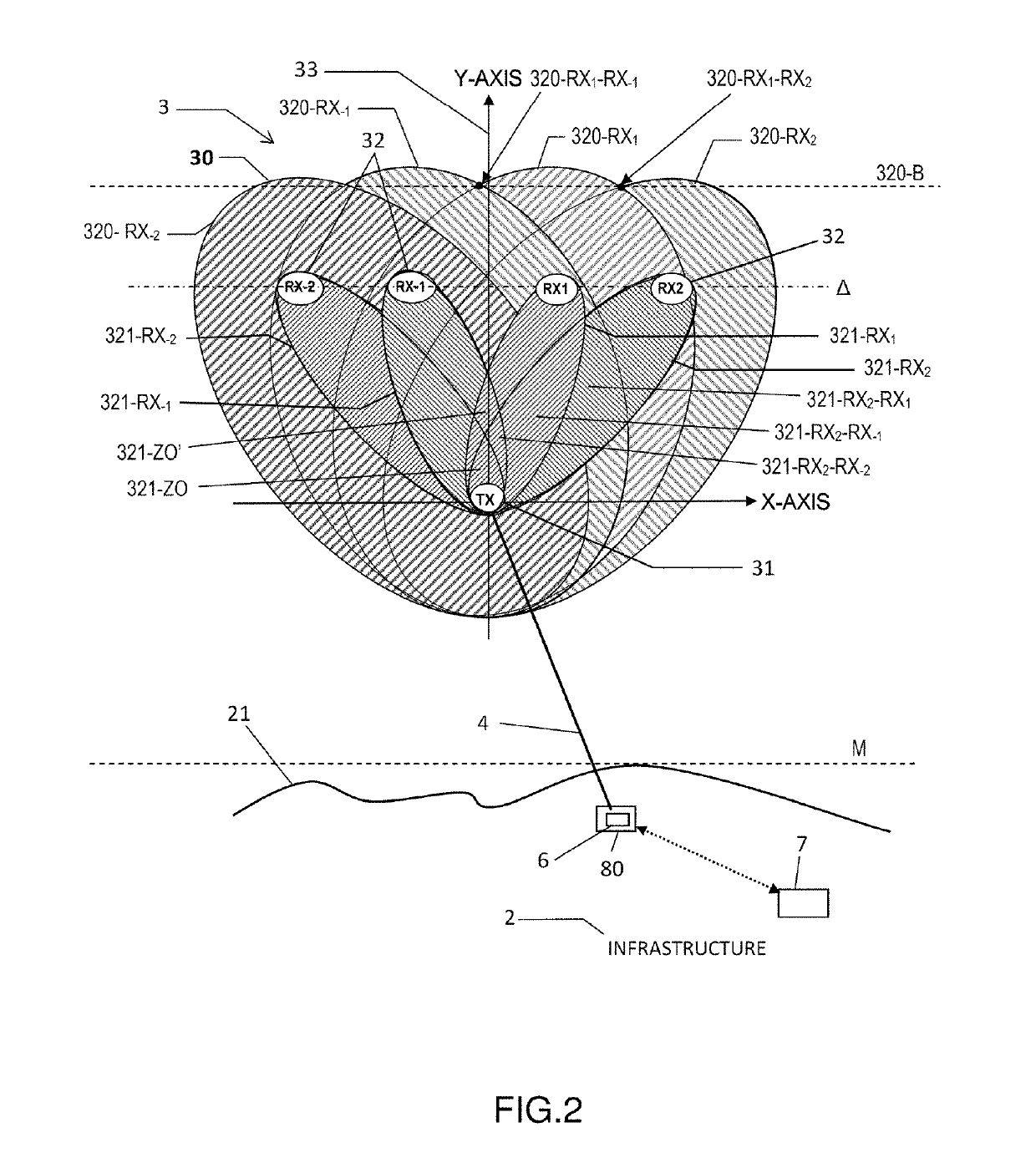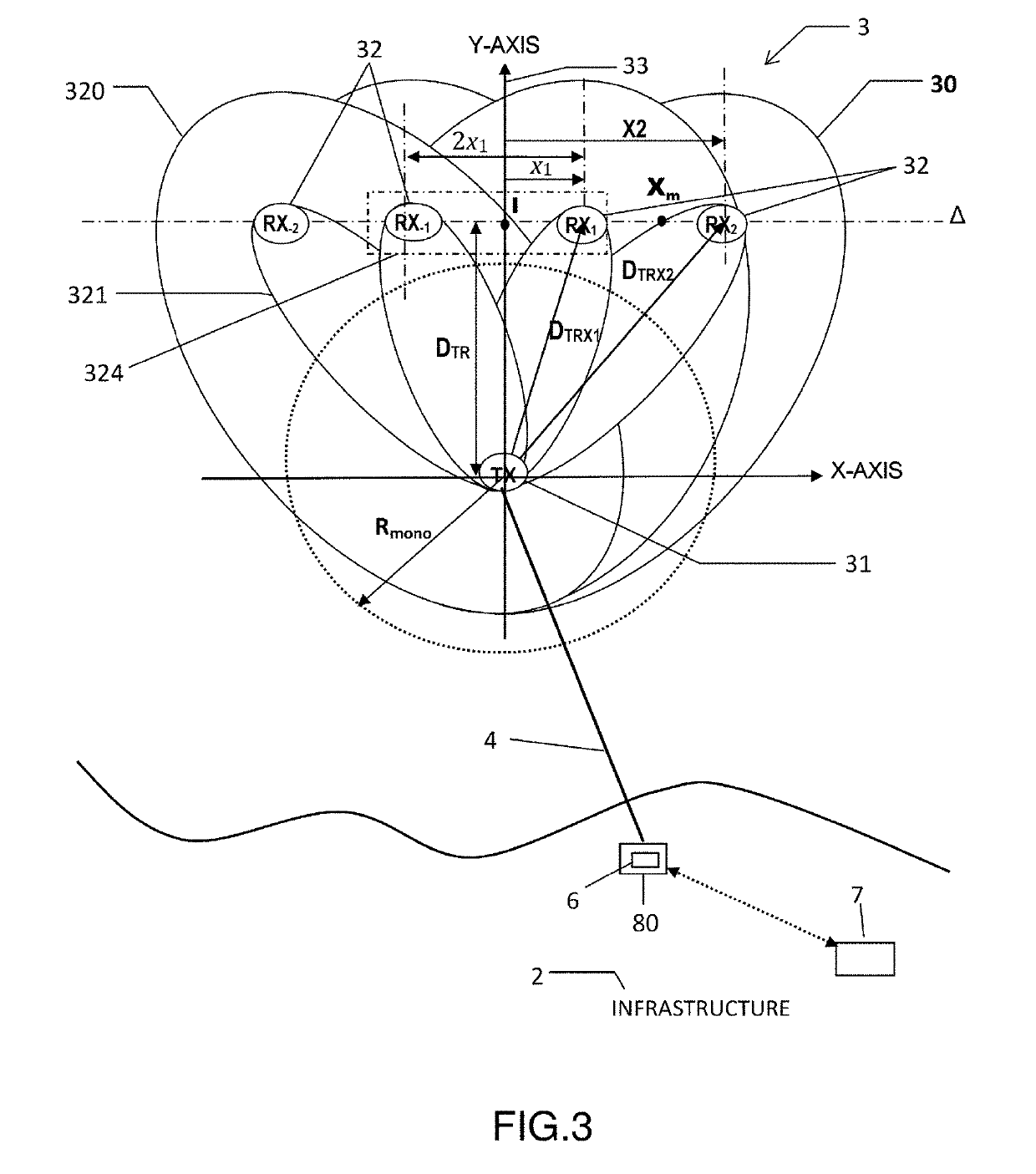Modular distributed system for the acoustic detection of underwater threats in a sensitive zone
a distributed system and acoustic detection technology, applied in the field of acoustic detection systems, can solve the problems of limiting the processing gain of such sonars, affecting the detection accuracy of underwater instruments, and exposing certain infrastructures that are accessible underwater to various types of threats
- Summary
- Abstract
- Description
- Claims
- Application Information
AI Technical Summary
Benefits of technology
Problems solved by technology
Method used
Image
Examples
Embodiment Construction
[0070]According to some embodiments according to the invention, what is proposed is an acoustic detection system (also called a “surveillance system” below) configured so as to detect at least partly submerged targets in a sensitive area defined with respect to an infrastructure, the detection system comprising at least one multistatic detection group, each multistatic detection group defining a detection area, and comprising:[0071]a submerged transmitter;[0072]a plurality of submerged receivers comprising at least two receivers (RX), each receiver of a given group forming, with the transmitter (TX) of the group, a bistatic pair {TX, RX}.
[0073]Each bistatic pair {TX, RX} generates an elementary detection area (320) surrounding a blind zone, the detection area of the group being formed by all of the elementary detection areas of the receivers of the group.
[0074]In some embodiments, the blind zone (also called “blind area” or “area of non-detection”) of each receiver in a given detect...
PUM
 Login to View More
Login to View More Abstract
Description
Claims
Application Information
 Login to View More
Login to View More - R&D
- Intellectual Property
- Life Sciences
- Materials
- Tech Scout
- Unparalleled Data Quality
- Higher Quality Content
- 60% Fewer Hallucinations
Browse by: Latest US Patents, China's latest patents, Technical Efficacy Thesaurus, Application Domain, Technology Topic, Popular Technical Reports.
© 2025 PatSnap. All rights reserved.Legal|Privacy policy|Modern Slavery Act Transparency Statement|Sitemap|About US| Contact US: help@patsnap.com



